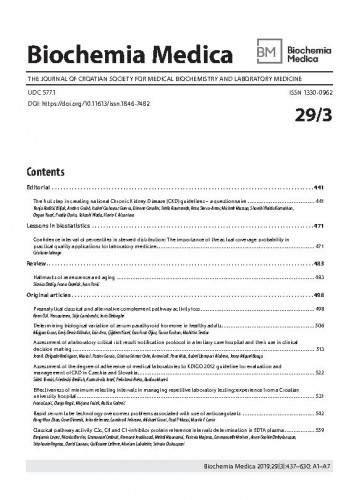It has already been reported that subinhibitory concentrations of β-lactam antibiotics can cause abnormal changes of bacterialforms, such as spheroplasts. Herein we report a case of Croatian male patient with Escherichia coli spheroplasts present in urine after treatment withtazobactam, on the tenth day of hospitalization. The aim of this report is to emphasize the inability of imaging based automated urine analysers torecognize some relatively uncommon forms of bacterial presentation in urine sediment.Materials and methods: During routine urine analysis, unusual particles were observed in patient urine. Urine sediment was examined by twourine analysers: Atellica 1500 (Siemens, Germany) and Iris iQ200 (Beckman Coulter, USA). Additionally, urine was sent for culture testing to Microbiologydepartment.Results: Both urine analysers didn’t indicate presence of bacteria in urine sediment. Unusual particles observed on the tenth day were classified aserythrocytes by both instruments. Dipstick test showed blood trace and microscopic analysis revealed bacteria in urine. Urine culture was positivefor Escherichia coli. Careful examination of urine sediment has confirmed that shapes present in urine were abnormal bacterial forms called spheroplasts.Conclusions: Imaging based automated urine analysers are not able to recognize bacterial spheroplasts in urine sediment misclassifying it as erythrocytes.Microscopic examination remains the gold standard for urines with blood trace or negative blood, in which erythrocytes are reported byurine analyser in urine sediment. Failure to identify and follow up such cases may lead to inaccurate treatment decisions and puts patient safety at risk.
Sažetak

 Biochemia medica : the journal of Croatian Society for Medical Biochemistry and Laboratory Medicine : 29,3(2019) / glavna i odgovorna urednica Daria Pašalić.
Biochemia medica : the journal of Croatian Society for Medical Biochemistry and Laboratory Medicine : 29,3(2019) / glavna i odgovorna urednica Daria Pašalić.